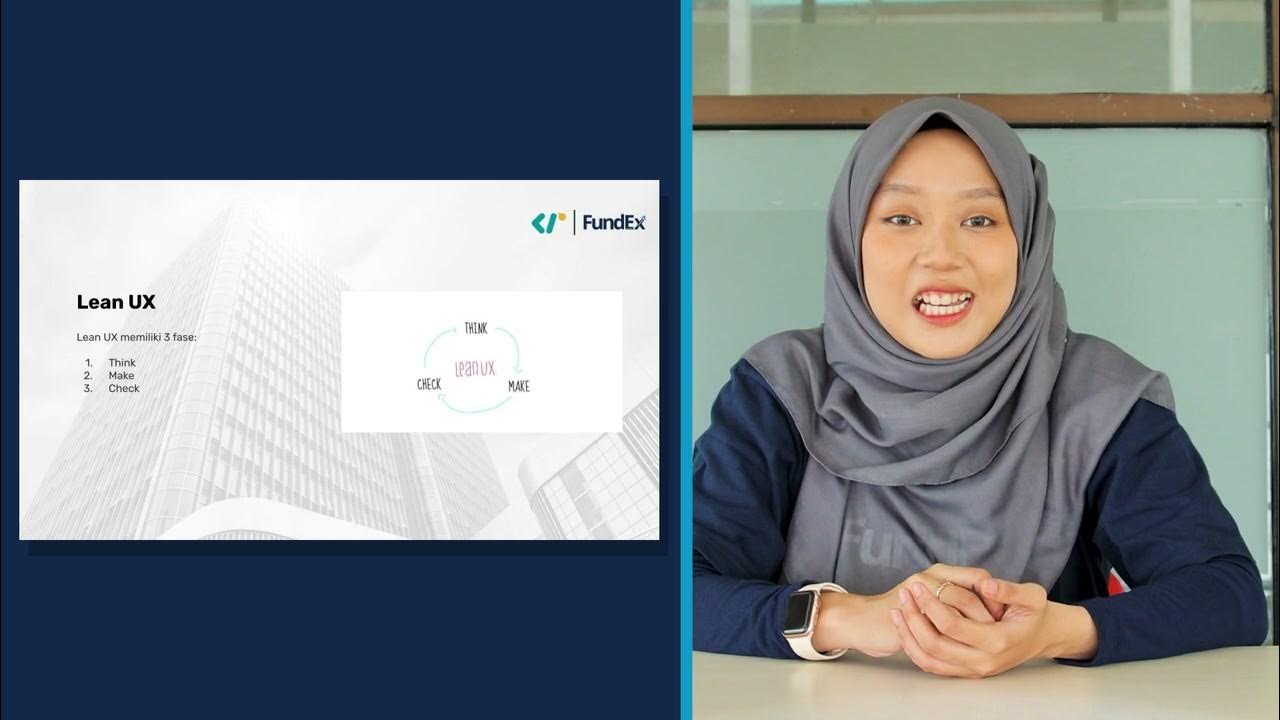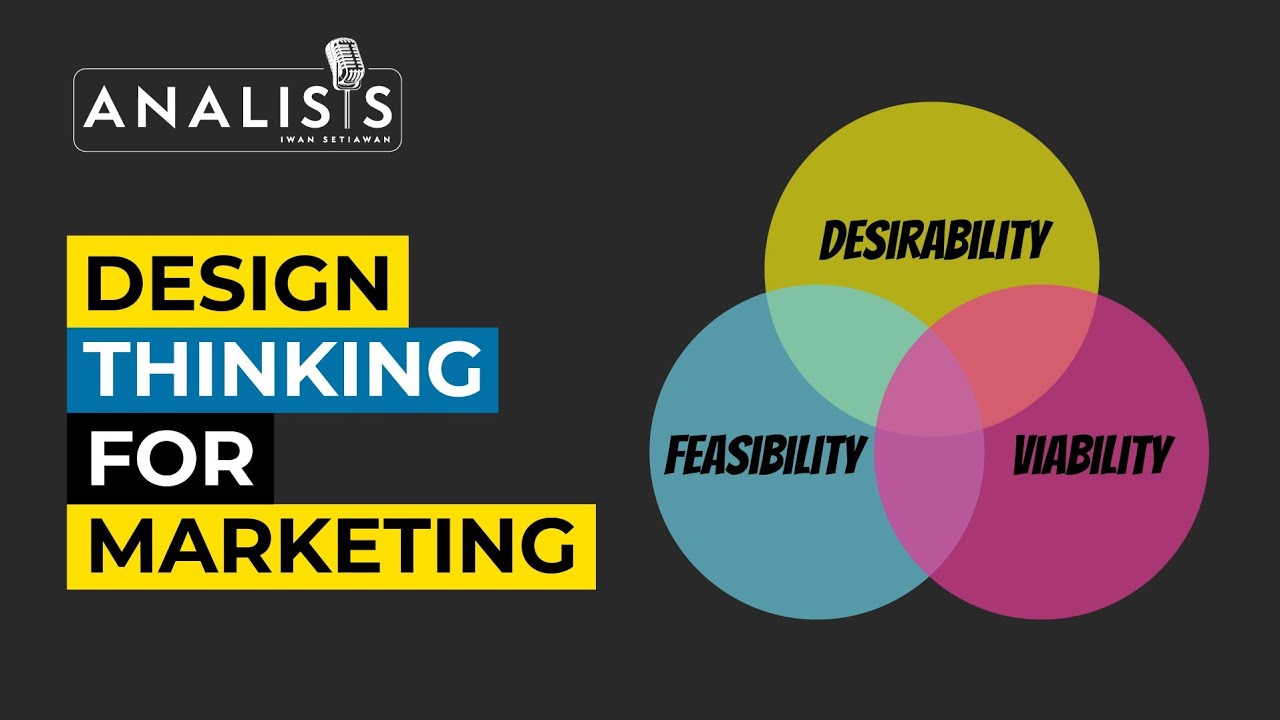The Evolving Double Diamond in Design Thinking by Martin Ferguson Pell
Summary
TLDRThis video introduces the Double Diamond design thinking approach, which emphasizes a systematic process for innovation. It involves two main stages: Divergent thinking to gather ideas and Convergent thinking to narrow down the best solution based on clear design criteria. The speaker suggests adding a third diamond to the process, where the solution is iterated and optimized based on user feedback, using the Sprints approach for quick testing and improvement. This approach allows for continuous refinement, ensuring that the final solution effectively meets user needs and specifications.
Takeaways
- 😀 The design thinking process doesn't have to be spontaneous; it can be systematic and iterative.
- 😀 The Double Diamond framework is a widely used approach to design thinking, consisting of divergent and convergent thinking phases.
- 😀 The first diamond focuses on gathering broad input from stakeholders and narrowing it down to key design criteria.
- 😀 The second diamond involves generating potential solutions and narrowing them down to the most suitable option.
- 😀 Traditional design thinking often ends by feeding back the final solution to the stakeholder group for approval.
- 😀 The speaker suggests adding a third Double Diamond iteration to further refine the solution with a smaller group of users.
- 😀 The third Double Diamond focuses on user feedback to compare how the solution performs against the original criteria.
- 😀 Iterating through the third Double Diamond helps prioritize issues and optimize the solution over multiple rounds.
- 😀 The Sprints approach is introduced as a way to rapidly test and improve the solution during the third iteration.
- 😀 Combining the Double Diamond method with Sprints accelerates prototyping, testing, and refining the final design.
- 😀 The third iteration allows for more flexibility and iterative refinement, leading to a more optimized final solution.
Q & A
What is the main idea behind the Double Diamond design thinking approach?
-The Double Diamond design thinking approach breaks the design process into two phases: divergent thinking (exploring all possibilities) and convergent thinking (narrowing down to a final solution). It helps systematically identify the best solution to a problem by engaging stakeholders.
How does the first diamond in the Double Diamond process work?
-In the first diamond, divergent thinking is applied, where a group of stakeholders identifies all the important factors or aspects they believe are necessary for the solution. This information is collected through open brainstorming and then organized into design criteria.
What happens in the second diamond of the Double Diamond process?
-In the second diamond, the focus shifts to exploring various potential solutions to meet the established design criteria. Stakeholders are encouraged to think freely and come up with different options. The best solution is then selected based on the criteria set earlier.
Why does the speaker suggest adding a third Double Diamond to the process?
-The speaker suggests a third Double Diamond to extend the design process and allow for further iteration. This phase involves testing the solution with a small group of users and refining it based on their feedback, helping to optimize the solution before final implementation.
What is the role of the third Double Diamond?
-The third Double Diamond involves taking the design solution back to a small subgroup of users to evaluate how well it aligns with the original design criteria. It focuses on prioritizing and addressing the observed issues through multiple iterations to refine the solution.
How does the Sprints approach tie into the design thinking process?
-The Sprints approach is a method for quickly testing prototypes in real-world conditions and refining them based on feedback. The speaker suggests combining it with the Double Diamond model to ensure the solution is optimized through fast, iterative feedback loops.
What is the key benefit of using a systematic design approach like Double Diamond over spontaneous brainstorming?
-A systematic design approach like Double Diamond helps avoid random or spontaneous thinking and allows for a more structured exploration of possible solutions. This leads to more reliable, well-considered decisions and solutions that align better with user needs.
How does the feedback loop in the third Double Diamond improve the final design solution?
-By getting feedback from a small group of users during the third Double Diamond, designers can identify mismatches between the solution and the original design criteria. This iterative process allows for adjustments to be made before finalizing the solution, ensuring it better meets the users’ needs.
What does the term 'divergent thinking' mean in the context of the Double Diamond process?
-Divergent thinking refers to the phase where a wide range of possibilities is explored without constraints. It encourages creativity and open brainstorming, allowing all potential solutions and ideas to be considered before narrowing down to the most viable ones.
How does the second Double Diamond differ from the first in terms of focus?
-The first Double Diamond focuses on gathering input and defining design criteria through divergent thinking. The second Double Diamond, on the other hand, focuses on generating possible solutions that meet those criteria, moving toward convergent thinking where the best option is selected.
Outlines

This section is available to paid users only. Please upgrade to access this part.
Upgrade NowMindmap

This section is available to paid users only. Please upgrade to access this part.
Upgrade NowKeywords

This section is available to paid users only. Please upgrade to access this part.
Upgrade NowHighlights

This section is available to paid users only. Please upgrade to access this part.
Upgrade NowTranscripts

This section is available to paid users only. Please upgrade to access this part.
Upgrade NowBrowse More Related Video

Project-Based Internship FundEx - UI/UX Designer - Company Coaching Video 1

Belajar Design Thinking dan Penerapan di Marketing - ANALISIS #49

Sesi 1 - Apakah Design Thinking Itu?

Week 1 Masterclass Ismail Akbani Mastering Customer Empathy

Konsep DESIGN THINKING - Part 1 - Overview

Lima Tahapan Design Thinking | CIAS QuickFix with Dr. Indrawan Nugroho
5.0 / 5 (0 votes)